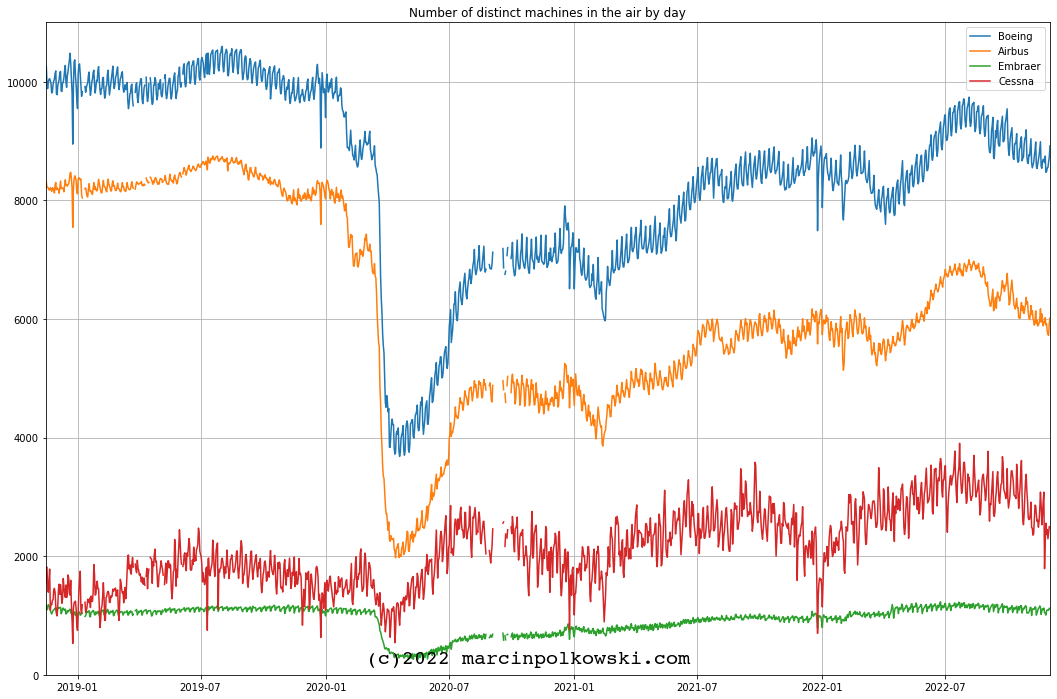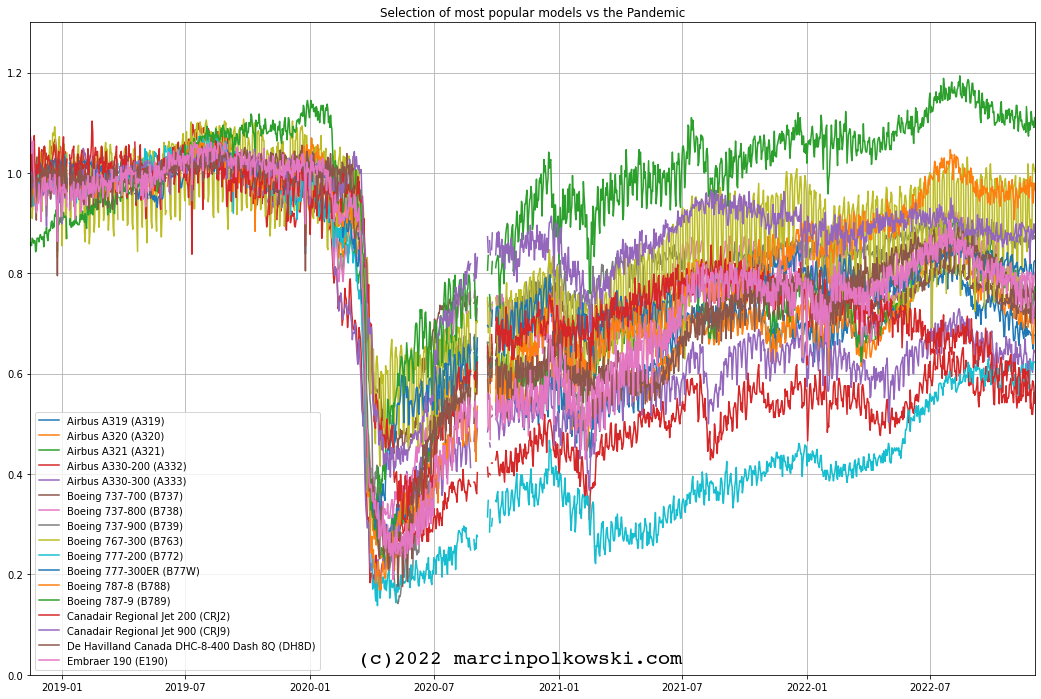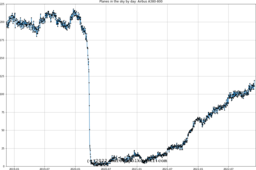Note: If you have questions or comments about the dataset used here, do not hesitate to contact me. You will find my email on my personal website.
As I mentioned a a few months ago I’ve been collecting flight statistics for over 4 years. It happened that these 4 years were the most interesting in the industry ever. 2022 is the year when the travel demand is back to normal, but the airlines struggle with supply, because of the cuts they made in 2020/2021 to survive.
Depending on the country and region, people were living in lockdowns and countries were banning local and international travel. I think I don’t need to explain that to anyone.
On top of the Pandemic, we were witnessing events influencing individual airplane models. One of the examples of such events was the retirement of Airbuses A380 because they were too big. Some airlines now work hard to bring them back (ex. Lufthansa announced to bring back four A380s in 2023).
In the meantime, we had two catastrophes of Boeing’s 737 MAX-8 that grounded all of them for many months.
A few weeks ago Boeing produced the last 747 – one of the most recognizable planes in history. I created most of the content for this article while onboard 747 – my symbolic tribute to this great plane. I had the pleasure of traveling on both the lower and upper decks of this plane, however, I still hope that one day I will be able to get the First Class ticket that allows sitting “in front of the pilot” – a pretty unique thing.
Ok, let’s get to the data! I used my huge dataset to calculate the number of airplanes (unique machines), by model and date. Let me show you the most interesting results:
Boeing 737 MAX-8
On October 29, 2018, Lion Air Flight 610, a 737 MAX 8, plunged into the Java Sea 13 minutes after takeoff from Soekarno–Hatta International Airport, Jakarta, Indonesia. On March 10, 2019, Ethiopian Airlines Flight 302, a 737 MAX 8, crashed approximately six minutes after takeoff from Addis Ababa, Ethiopia. This second crash (marked as a red vertical dashed line) caused all MAX-8s to be grounded. It took almost 2 years before these planes were allowed back in the air. This model is constantly produced and sold, hence the growing number of planes in time.

Boeing, Airbus, Embraer, and Cessna VS the Pandemic
If we look at results consolidated by plane manufacturers we can see how differently the Pandemic affected commercial airliners (Boeing, Airbus, Embraer) and private planes (Cessna). I do realize that I generalize here the distinction between commercial and private.

Most popular models vs the Pandemic
Let’s look at the selection of popular planes and their counts in the air during the Pandemic. This plot is normalized: for each plane model, 1 on the y-axis is corresponding to the average number of planes a day before January 1st, 2022. We can see that the different models were “hit” differently by the Pandemic, but all of them still struggle to get back to “pre Pandemic” counts.

Individual airplanes
In case you are interested in other examples, I’m sharing plots for most airplane models. I encourage you to take a look and let me know if you found anything interesting.










































































































